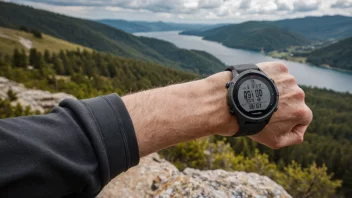Racing is one of the most exhilarating and challenging sports, pushing athletes to their limits while demanding precise skill, strategy, and adaptability. However, the complexity amplifies when racers face diverse environments, each presenting unique challenges and requirements. Whether you're gearing up for a track event, an off-road rally, or a street race, understanding how to prepare for these varying conditions is crucial for both performance and safety. In this article, we will explore essential preparation strategies, safety equipment, and performance tips tailored for racing in diverse environments.
Understanding Diverse Racing Environments
Diverse racing environments can include everything from smooth asphalt tracks to rugged dirt paths, icy winter roads, and even urban circuits. Each of these terrains affects vehicle handling, tire choice, and driver technique. Let's break down a few common environments:
- Asphalt Tracks: Fast and predictable, these surfaces allow for high-speed racing but require precise handling and braking techniques.
- Off-Road Courses: Involving gravel, mud, or sand, off-road racing demands vehicles with superior suspension and drivers skilled in navigating unpredictable terrain.
- Winter Racing: Snow and ice introduce significant challenges, requiring racers to adapt their driving style and utilize specialized tires.
- Urban Racing: Street circuits necessitate acute awareness of obstacles and tight corners, often requiring quick reflexes and dynamic decision-making.
Essential Gear and Safety Equipment
Safety should always be a priority in racing, especially in diverse environments where the risk of accidents increases. Here’s a guide to essential gear:
Helmets
A helmet is your first line of defense. Ensure it meets safety standards and is fitted properly. Consider features like:
- Visors: These can protect your eyes from debris and improve visibility in various conditions.
- Ventilation: Proper airflow can help maintain comfort during long races.
Racing Suits
Invest in a fire-resistant racing suit that fits well and allows for freedom of movement. Look for suits with:
- Moisture-Wicking Fabrics: These help keep you dry and comfortable.
- Padding: Strategic padding can provide additional protection in case of impact.
Footwear and Gloves
Proper footwear and gloves enhance grip and control. Choose options that offer:
- Non-Slip Soles: Essential for maintaining pedal control.
- Comfortable Fit: Ensures quick response times and reduced fatigue.
Performance Preparation Techniques
Beyond gear, performance preparation is vital for adapting to diverse racing conditions. Here are some strategies:
Physical Conditioning
Racing demands not only mental acuity but also physical endurance. Consider a training regimen that includes:
- Cardiovascular Training: Activities like running or cycling improve endurance.
- Strength Training: Focus on core and upper body strength for better control and stability.
Practice in Varied Conditions
Seek out opportunities to practice in different environments. This allows you to:
- Learn Vehicle Dynamics: Understand how your vehicle responds to different terrains.
- Adapt Techniques: Refine your driving style according to the demands of each surface.
Mental Preparation
Mental readiness is just as important as physical training. Techniques for enhancing focus include:
- Visualization: Mentally rehearse your racing techniques and scenarios.
- Goal Setting: Establish clear, achievable goals for each racing event.
Technology in Racing Preparation
The integration of technology in motorsports has revolutionized how racers prepare for events. Here are some innovations that can enhance your training:
Telematics
Telematics systems provide real-time data on vehicle performance, helping you make informed adjustments. Key metrics include:
- Speed Tracking: Monitor how your speed varies across different terrains.
- Engine Diagnostics: Ensure your vehicle is operating at peak performance.
Simulators
Racing simulators allow you to practice without the risks associated with real-world racing. Benefits include:
- Controlled Environment: Experiment with different setups and strategies.
- Feedback Mechanisms: Receive immediate analysis of your performance.
Wearable Technology
Wearables can track your physiological data during training and races. Important metrics to monitor include:
- Heart Rate Variability: Helps assess your recovery and fitness levels.
- GPS Tracking: Analyze your racing lines and braking points.
Final Preparations Before Race Day
As race day approaches, ensure you are fully prepared both mentally and physically. Consider these final steps:
- Vehicle Checks: Perform a thorough inspection of your vehicle, checking tire pressure, fluid levels, and brake functionality.
- Rest and Nutrition: Prioritize sleep and consume a balanced diet to fuel your body.
- Review Race Strategy: Go over your plan and consider contingencies for different scenarios.
Conclusion
Preparing for racing in diverse environments is an intricate process that requires a combination of proper gear, rigorous training, and strategic preparation. By understanding the specific challenges each environment presents and employing effective performance and safety techniques, you can enhance your racing experience. Embrace the advancements in technology that aid in preparation and stay committed to continuous improvement. Remember, the key to success in racing is not just speed but also the ability to adapt and stay safe in ever-changing conditions.






